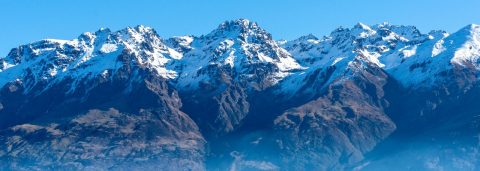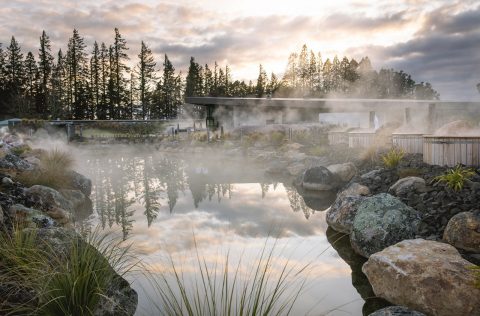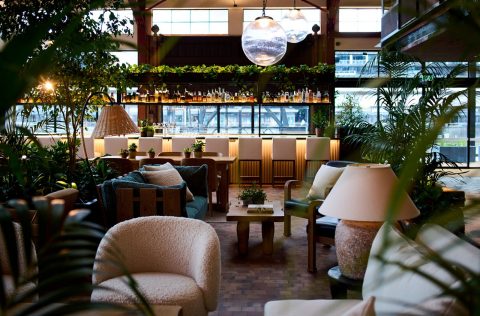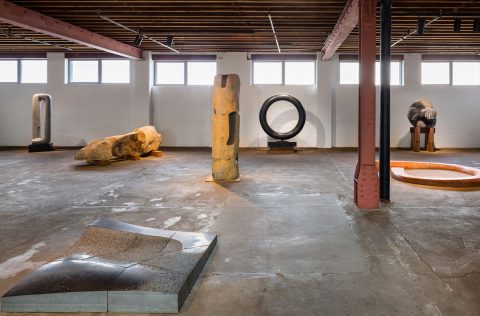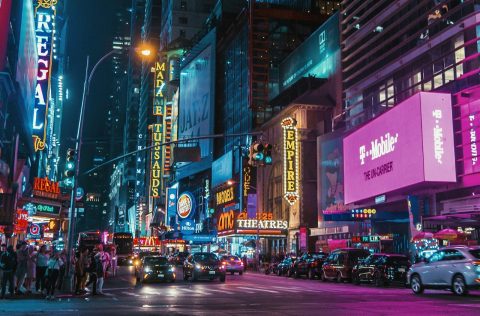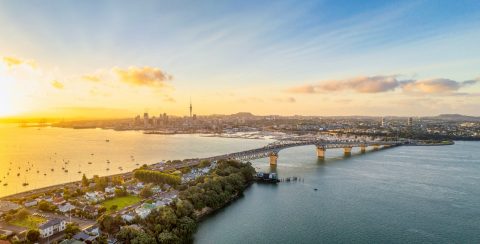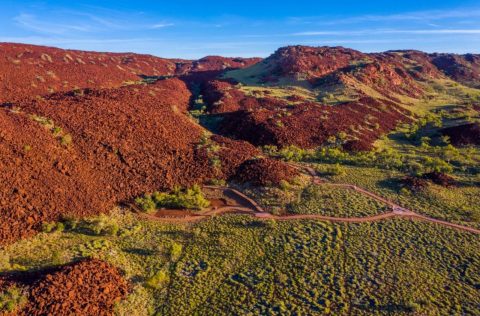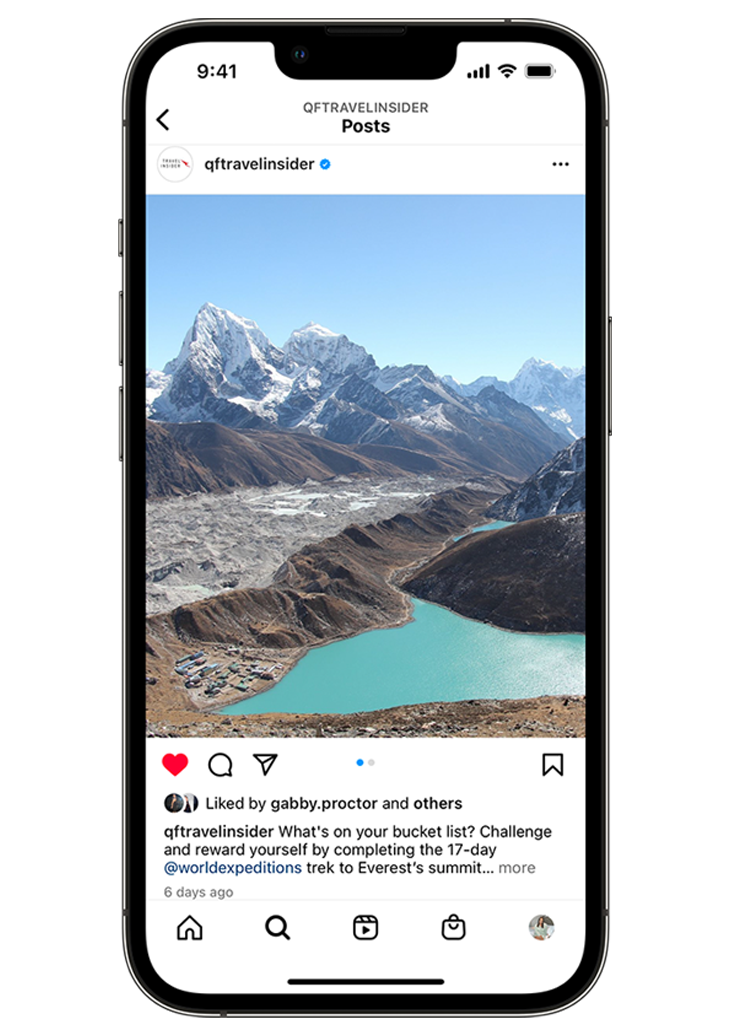13 of the Best Places to Spot the Aurora Around the World
The sun’s 11-year solar cycle is nearing its climax in 2025, with October to December promising some of the richest and most intense solar displays of the decade. (Some solar scientists say that the years following the peak of the solar cycle guarantee exceptional celestial sightings, too, so prepare for 2026 and 2027 to be equally as epic.) To see the bright lime greens and vibrant pinks of the Northern and Southern lights, the recipe has to be just right: minimal (if any) light pollution, proximity to the North and South poles, clear night skies and a camera device to capture the lights in full colour, as they can sometimes be barely visible to the naked eye. Want to maximise your chances? Booking a trip to these destinations around the world will do just that.
Image credit: Worawat - stock.adobe.com
New Zealand
1/14New Zealand’s South Island is geographically well placed for observation of dramatic celestial displays and the views from Aoraki Mackenzie International Dark Sky Reserve, about a three-hour drive from Christchurch, are particularly hard to beat. The 4367-square-kilometre dark sky reserve, which includes Aoraki/Mount Cook National Park and the Mackenzie Basin in its catchment, is the largest in the Southern Hemisphere and SkyScape’s plush king-sized beds – beneath a glass roof – are a great spot from which to witness the cosmic show. Just 4.5 hours by ferry from Auckland, Aotea Great Barrier Island also offers stunningly crisp, clear skies as a canvas for aurora demonstrations. Female-owned Good Heavens runs small tours at Medlands Beach on the island’s east coast, with home-baked brownies part of the dark-sky experience.
Image credit: Ryan Hoi - stock.adobe.com
Tasmania, Australia
2/14With the majority of its 68,401 square kilometres wild and rugged, Australia’s southernmost state has near-perfect celestial conditions, whether you’re in the city or the bush. In Hobart, prime aurora-sighting spots include the top of Mount Wellington, 40 minutes by car from the airport, with panoramic views of the horizon at 1270 metres above sea level; or Carlton Beach, a 40-kilometre drive east of the city. For even less light pollution, try Dove Lake near Cradle Mountain, two hours from Launceston; or take the car ferry to Bruny Island, just under two hours south of Hobart, where the silhouette of the Cape Bruny Lighthouse will add extra drama (and a signature geotag) to any snaps taken.
Image credit: Stuart Westmorland/Danita Delimont - stock.adobe.com
Fairbanks, USA
3/14Being both close to the North Pole and within the northern “auroral oval” (doughnut-like belts above the poles where charged particles flow), the city of Fairbanks – a six-hour drive or one-hour flight north of Anchorage – offers fantastic viewing opps from anywhere in town during dark nights from August to April. In the 8000-square-kilometre Chena Lake Recreation Area, located about 30 minutes from town and close to the city of North Pole, the namesake lake’s surface serves as a stunning reflective mirror, capturing those picture-perfect greens and pinks. Experience Fairbanks’ best on an eight-day aurora-centric adventure with Gondwana Ecotours, which includes a “wake-up service” when the aurora is visible, dog-sledding experiences and a stay in a rustic Alaskan lodge.
Image credit: Patrick - stock.adobe.com
South Australia, Australia
4/14When geomagnetic storms are strong (as predicted over Australia’s winter in 2025), even South Australia is treated to dazzling displays of aurora colourways. The River Murray International Dark Sky Reserve – the first of its kind in Australia and one of only 24 Dark Sky Reserves in the world – is a safe bet for clear and sparkling skies, only 90 minutes by car from Adelaide. Try your luck on an intimate astronomy tour with Juggle House Experiences (Milky Ways, Mars Bars and hot Milo included) or load the 4WD for a self-drive experience to astro hotspots. The view’s great on Kangaroo Island, too, with the island’s lack of light pollution contributing to its charm. Flinders Chase National Park, at the island’s south-west edge, is the ideal spot.
Image credit: Piotr Krzeslak - stock.adobe.com
Norway
5/14Tromsø, about a two-hour flight north of the capital Oslo, is renowned as one of the world’s best spots to see the Northern Lights, with long dark evenings between September and April providing plenty of opportunities for scenic displays. Tour guides offer unique ways to experience the aurora, from dinners on heritage boats to dinner and guided reindeer sledding and traditional music with a family-run operator from the indigenous Sámi people. At 421 metres above sea level, the top of Mount Storsteinen (accessible via the Fjellheisen cable car for about $45 one way or a trek up 1203 stone steps) offers a clear aspect from the sparkling city to the water. If you’d prefer your experience with a side of champagne, Skybar, on the 11th floor of Clarion Hotel The Edge in Tromsø’s CBD, often open until midnight.
Image credit: Alexandre Patchine - stock.adobe.com
Swedish Lapland, Sweden
6/14The rugged snow-capped mountains and remote wilderness of Swedish Lapland – plus its location in the heart of the auroral oval – make it prime for sighting the Northern Lights, with Abisko National Park and its mountaintop Aurora Sky Station considered among the best places in the world. (Tickets for the 20-minute night-time chairlift to the top of Mount Nuolja – complete with winter overalls and boots to help battle the chill – start at about $35.) To get there, it’s about a 90-minute drive from Kiruna Airport or a 16-hour overnight train trip from Stockholm. Consider coordinating your journey with a Eurail night train so you can admire the nightscape from the comfort of your sleeper cabin.
Image credit: Podsawat - stock.adobe.com
Victoria, Australia
7/14Given that your best shot at spotting the aurora comes from staying as far south as possible, you’ll be heading in the right direction if you aim for Wilsons Promontory – where you’ll find mainland Australia’s southernmost point, South Point – a 2.5-hour drive south of Melbourne. There’s great camping at Tidal River Campground, too, so you can make a weekend of it. A little closer to the city, Cape Schanck and Flinders Beach on the Mornington Peninsula also offer uninterrupted vistas, while beach towns Anglesea and Aireys Inlet – both on the Great Ocean Road south of Melbourne – have a similarly great reputation for night-sky activity (as well as incredible coastal vistas, of course). Snooze at Sunnymead Hotel in Aireys Inlet when you’re done chasing the stars.
Image credit: francoisartss - stock.adobe.com
Westfjords, Iceland
8/14Known for its picturesque fishing villages and unique fauna (we’re looking at you, puffins and fuzzy Arctic foxes), the Westfjords region is a remote pocket of perfect Northern Lights sightings, with the town of Ísafjörður – the region’s unofficial capital – and its dramatic cliffs accessible from Reykjavík on twice-daily 40-minute flights or a 5.5-hour drive. From the peak of 638-metre-tall Bolafjall Mountain, in the heart of Ísafjörður, you’ll see captivating glimpses of the vibrant green flashes across onyx skies. With a population of fewer than 3000 permanent residents, you’re unlikely to have to battle for the best spot at the lookout.
Image credit: Alamy Stock Photo
Joshua Tree National Park, USA
9/14While Joshua Tree National Park is generally outside of the auroral zone, at more intense periods of the solar cycle – such as later in 2025 – it’s a contender for wide views of the aurora borealis. The entire park (a 2.5-hour drive from Los Angeles) is a designated Dark Sky Park destination so, at the very least, you’ll see glittering stellar displays and even the Milky Way while you’re waiting. When you’re ready to turn in for the night, do so at the brand-new Reset Hotel (opening in early June), where 65 shipping-container-inspired modular rooms include their own fire pits and private stargazing platforms.
Image credit: Mykhaylo/Wirestock Creators - stock.adobe.com
Michigan, USA
10/14Northern Michigan is positioned at an ideal latitude to catch the aurora borealis, with the banks of the 82,000-square-kilometre Lake Superior offering clear horizons – some including uninterrupted 180-degree views – to see the solar event. The Headlands International Dark Sky Park, covering almost 250 hectares in Northern Michigan – a four-hour drive north of Detroit – doesn’t have any north-facing spots but offers crystal-clear visibility, with strict restrictions on light pollution in and around the park. In the state’s Upper Peninsula region, the journey up Brockway Mountain Drive is set a helpful 402 metres above sea level. Meanwhile, Keweenaw Dark Sky Reserve, which boasts an onsite lodge, holds an annual festival every April for “dark-sky enthusiasts” to learn about the best ways to appreciate the cosmos.
Image credit: davidmarx - stock.adobe.com
Manitoba, Canada
11/14Located directly beneath the auroral oval, Manitoba – a province that encompasses Winnipeg Richardson International Airport – often experiences displays of stunning purples and vibrant greens, with Churchill (a town in the province’s north, a 2.5-hour flight from Winnipeg) even attracting scientists to study the celestial phenomenon. January to March is considered the best time to see it but it’s a staple pretty much all year round. On a call-when-the-aurora-appears tour with Discover Churchill, you might even spot a polar bear while searching the skies for swathes of colour. But the six-day “learning vacation” at the Churchill Northern Studies Centre, 23 kilometres out of town, is hard to beat for immersiveness: you’ll spend your days in seminars, learning about local culture, history and science, or exploring via dog sled, while at night you’ll admire the Northern Lights from the comfort of a heated dome.
Image credit: Andrew - stock.adobe.com
Orkney, Scotland
12/14The Northern Lights are known as “the merry dancers” in this part of the world – a one-hour flight from Edinburgh – where the colours are visible on dark winter nights, thanks to the low light pollution on the 70-ish islands of the Scottish archipelago. For lookout locations with plenty of parking, consider the Standing Stones of Stenness (within the Heart of Neolithic Orkney UNESCO World Heritage Site), where six-metre-tall monoliths create a quirky silhouette for the peachy aurora; the uninterrupted water sightlines of the Sands of Evie, on the north-west coast of the Orkney mainland; or the elevated north-facing position of Wideford Hill, which enjoys an incredible panorama over town and 5000 years of history.
Patagonia, Chile and Argentina
13/14You’ll have the best chance of catching the spectacular blues and greens of the Southern Lights in Patagonia (a region that sprawls across both Chile and Argentina) from April to September; alpine pockets of secluded mountains and high-altitude regions are your best bet. In Chile, that includes the Atacama Desert in the country’s north, which enjoys 300 clear nights a year on average, or the 1814-square-kilometre Torres del Paine National Park – home to the famous multi-day hike known as the W Trek, which traverses the park’s French Valley and Grey Glacier. In Argentina’s south, Ushuaia – the southernmost city in the world – has 17 hours of darkness in winter and the aurora has been known to regularly dance behind the peaks of Tierra del Fuego National Park.
Up Next
14/14